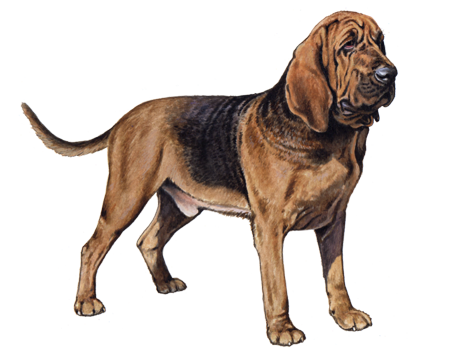
Griffon Fauve de Bretagne
The Griffon Fauve de Bretagne is both talented and good-looking. With a keen sense of smell and a solid work ethic, these dogs make excellent hunters. And their rich, golden color makes them stand out in every family photo.
Interested in discovering if your dog is a Griffon Fauve de Bretagne?
Check out Wisdom Panel's DNA tests.

Griffon Fauve de Bretagne Traits
General Appearance
The Fauve de Bretagne is a bony, muscular dog that's resistant to cold weather and performs well on rugged terrain.
Coat and Coloring
This breed has a short, rough, and harsh coat. The coat is never curly or wooly, and the hair on the face is not as profuse, with softer hair on the ears. Their fawn-colored coats range from golden wheaten to brick red. Some have a white star on the chest, and they can occasionally have a few black hairs on the head or ears. Their nose can be black or brown.
Distinctive Physical Traits
The Fauve de Bretagne has dark brown eyes and a lively expression. Their ears reach the end of their nose when pulled forward. These dogs have well-muscled legs and carry their medium-length tail in a sickle fashion. They are known for their strong bark, which is short and repeated (and used often).
Griffon Fauve de Bretagne Temperament
The Griffon Fauve de Bretagne is a good-natured dog that's affectionate and social with people. Still, their preference is to spend their days doing what they do best: hunting.


Griffon Fauve de Bretagne History
The Griffon Fauve de Bretagne dates back to 14th century France. One of the oldest French scent hounds, this breed primarily hunted wolves. When the wolf population disappeared, these dogs used their talents to hunt fox, wild boar, roe deer, and hare.
Leading up to World War II, only a few Breton farmers and hunters still kept this breed. Marcel Pambrun founded the Club de Fauve de Bretagne in 1949 to preserve the breed, along with a short-legged breed derived from it, the Basset Fauve de Bretagne. The Griffon Fauve de Bretagne is still considered a rare breed outside of France.
Griffon Fauve de Bretagne Care
Nutrition
This breed does well on high-quality dog food formulated for their age, size, and activity level. To help them maintain a healthy weight, measure their meals to avoid overfeeding and keep treats to 10% or less of their daily calories.
Grooming
The Griffon Fauve de Bretagne's short coat is relatively easy to maintain. Regular brushing to remove loose fur and dirt will keep them looking sharp. Additionally, regular ear checks, nail trims, and dental care should be part of their grooming routine.
Exercise
These active dogs have plenty of energy and stamina. They require daily walks or vigorous backyard play sessions—ideally totaling two hours a day. Better yet, take them on long hikes with plenty of sniffing opportunities so they can exercise their noses, too.
Training
Temper any stubborn tendencies by using consistent, firm training techniques. In addition, these dogs respond well to positive reinforcement using treats or favorite toys as rewards for desired behaviors.
In addition to obedience training, all breeds benefit from early socialization. Helping them feel comfortable with different people and environments when they're young will help them grow into well-adjusted adult dogs.
Breed Group
Hound
The most common ancestral trait of this group is being used for hunting. Some use acute powers of scent to follow a trail while others demonstrate the gift of stamina as they run down a quarry. Beyond these two common traits, however, generalizations about hounds are hard to come by as the group is comprised of a very diverse lot of breeds.
Resources
https://www.fci.be/Nomenclature/Standards/066g06-en.pdf
https://www.centrale-canine.fr/le-chien-de-race/griffon-fauve-de-bretagne
http://clubdufauvedebretagne.fr/
https://www.thekennelclub.org.uk/breed-standards/hound/griffon-fauve-de-bretagne-imp/
Reviewed July 11, 2023 by Casey Knox, DVM


































